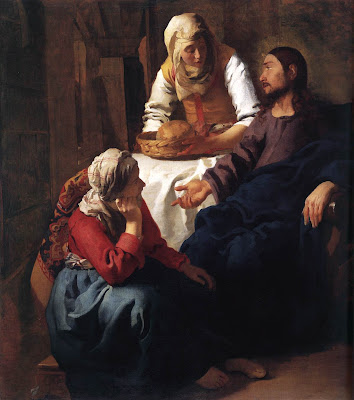Generosity – ‘Six stone water-jars, each holding twenty or thirty
gallons, had become wine’.
This is a visual journey,
leading the eye around a chain of people through which the story of the Wedding
at Cana is told. The focus is on the connections between the persons in the
story: someone turns to Mary to say that the wine has run out, Mary turns to Jesus,
who turns to the servants, who go to the wine steward and pour him a glass
drawn from the ceremonial jug filled with water before it’s taken to the groom.
The bride looks on. The other disciples and guests sitting at the table
complete the chain. Jesus, curiously, is not the centre of attention in the
painting. We see him almost in shadows, extending an arm, with which he seems
to direct the flow of wine pouring from the vessel. The impact of the red
vestment reinforces the fact that the focus is on the flow of wine. This scene
records the beginning of Jesus’ life in public ministry. But in his beginning
is his end: Jesus will end life with arms outstretched, from which will flow
his blood for the redemption of humanity. (The dog in the picture, following an
ancient tradition, represents human sinfulness.) But life made new,
Resurrection life flowing out from the Church will be the mark that Jesus is
actively present among us.







